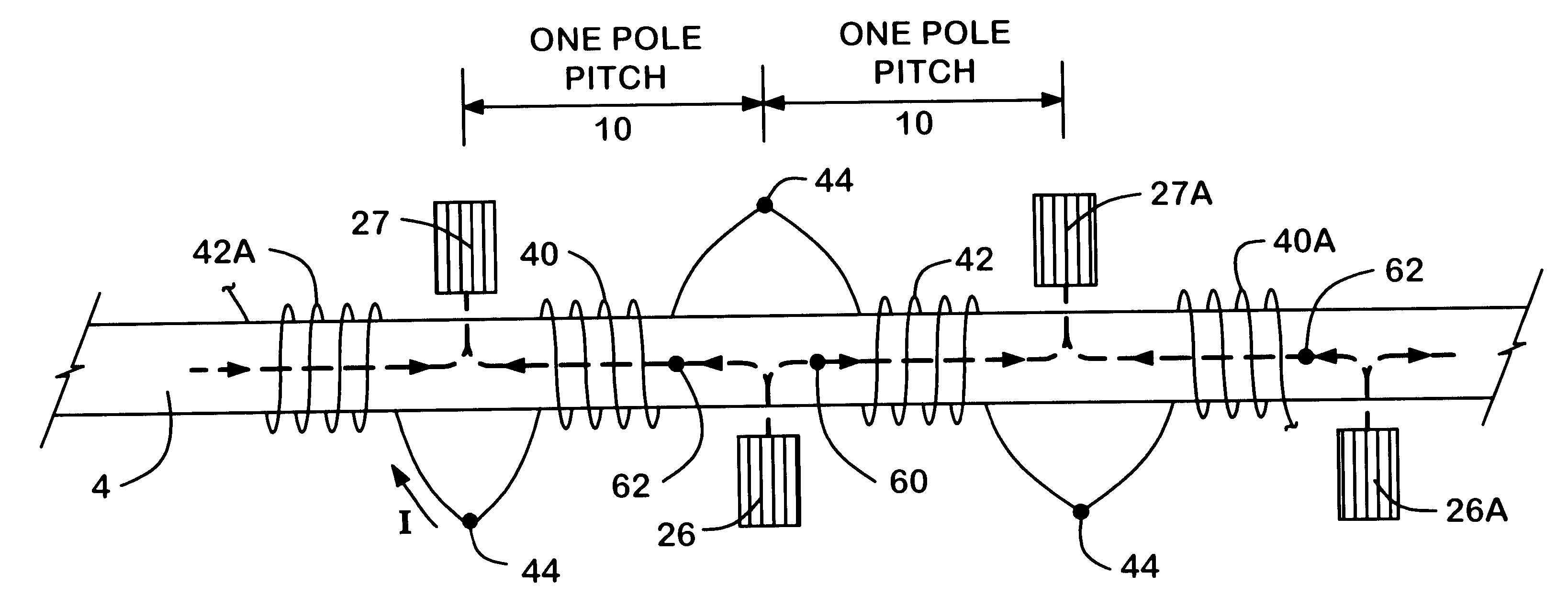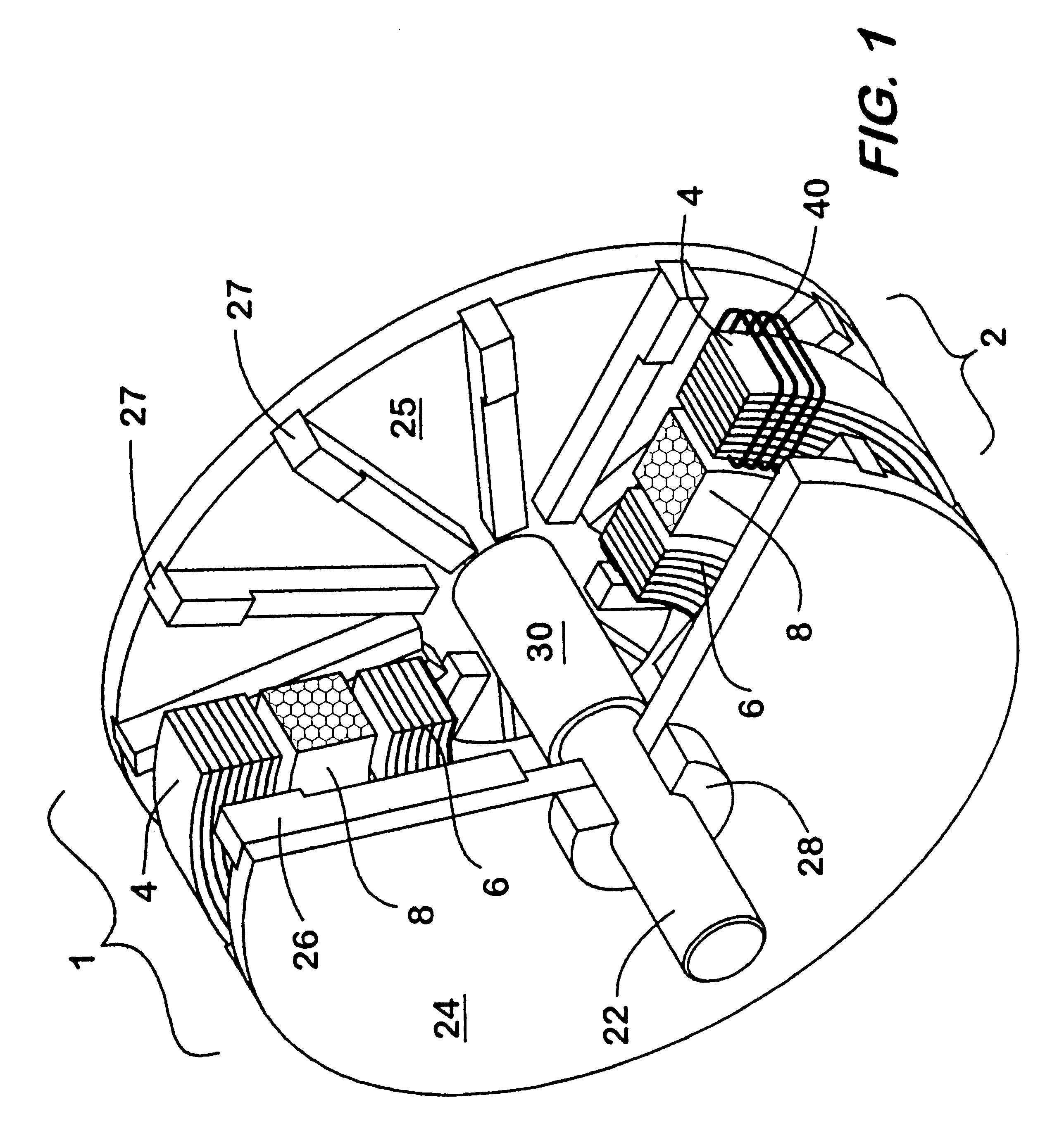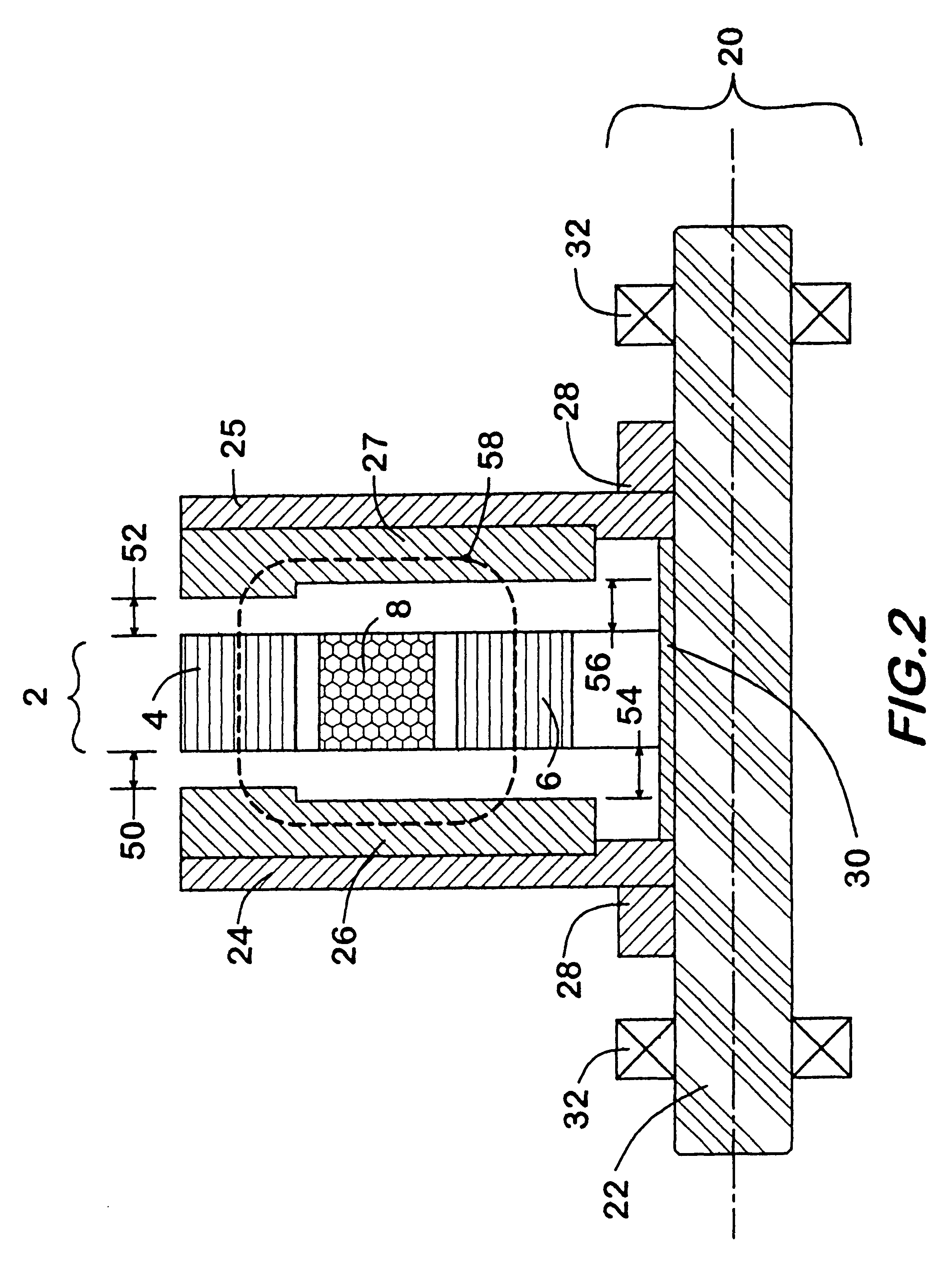Low inductance electrical machine for flywheel energy storage
a low-inductance, electrical machine technology, applied in the direction of synchronous motors, magnetic circuit rotating parts, magnetic circuit shapes/forms/construction, etc., can solve the problems of high output inductance, substantial design challenge, and difficulty in the operation of high-frequency alternators or generators
- Summary
- Abstract
- Description
- Claims
- Application Information
AI Technical Summary
Problems solved by technology
Method used
Image
Examples
Embodiment Construction
In a first embodiment, the low inductance electrical machine of the present invention is configured as a high frequency alternator. Referring to FIG. 1, the low output inductance electrical machine 1 of the present invention includes a stator assembly 2 including an outer annular ring 4 and an inner annular ring 6, both made substantially of laminated electrical or magnetic steel or other suitable magnetic material with low core loss characteristics in order to minimize eddy current losses and hysteresis losses in the stator, and in this embodiment manufactured by making a spiral winding of appropriate material. An annular field coil winding 8 of insulated copper wire or other suitable conductor is wound toroidially and located coaxially between the two stator rings 4 and 6, and provides means by which the stator and rotor may be excited by an external current source. Armature windings 40 are wound poloidially around sections of the outer stator ring 4 in a specific manner which wil...
PUM
 Login to View More
Login to View More Abstract
Description
Claims
Application Information
 Login to View More
Login to View More - R&D
- Intellectual Property
- Life Sciences
- Materials
- Tech Scout
- Unparalleled Data Quality
- Higher Quality Content
- 60% Fewer Hallucinations
Browse by: Latest US Patents, China's latest patents, Technical Efficacy Thesaurus, Application Domain, Technology Topic, Popular Technical Reports.
© 2025 PatSnap. All rights reserved.Legal|Privacy policy|Modern Slavery Act Transparency Statement|Sitemap|About US| Contact US: help@patsnap.com



